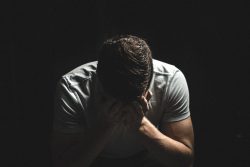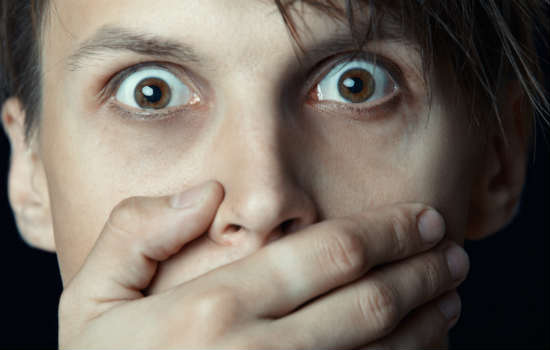Opiate addiction is a cruel master and a hard one to get away from. The cycle of addiction has strong roots in the role the drug plays in the function of your brain. You are probably trapped in the cycle right now. But you need to get out of it.
The Centers for Disease Control and Prevention (CDC) reports more overdose deaths occurred in 2014 than in any other year in recorded history, and six out of ten of those deaths were the result of opiate overdose. Don’t let yourself be another one of those statistics.
What follows is a step-by-step breakdown of the various stages of the opiate addiction cycle. Know that structured, professional rehab will break the cycle and let you take charge of your life again. For help finding a rehab facility and to have your questions answered, call our helpline at 800-442-6158 Who Answers? . It’s time to get the help that you deserve.
The Origins of Drug Liking
There are a lot of factors, both personal to the opiate user and specific to their environments, that have influence on whether or not a person decides to experiment with opiates and to continue taking them long enough to become addicted or dependent. The intense sensation of pleasure that opioids cause is a critical reason for continued use.
But, what causes that pleasure?
According to an article in Addiction Science & Clinical Practice, when opiates make their way through the body, they attach to opiate receptors on the surface of brain cells. This triggers the process that the brain uses to reward people with pleasure when they participate in an activity that promotes life functions, like sex or eating. Prescribed opiates are used to minimize pain, but when the drug trigger pleasure in the absence of substantial pain, they motivate repeated use for the euphoric sensations.
At this stage, you move from a single recreational use to using more often because you like the sensation of being high. You still maintain your job and your relationships. You haven’t faced any negative consequences of your use, yet. You are simply getting high because it feels good.
During this time, your brain is making memories of these good feelings, along with the environment and circumstances present when you get high. These conditioned associations mean that you will crave opiates when you once again encounter people, places, or things that remind your brain of getting high. These cravings might be causing you to become more regular in your opiate use.
Tolerance, Dependence, Withdrawal

Opiate withdrawal works to encourage continued drug use.
Few things drive opiate dependence and addictive behaviors like withdrawal.
The more you use opiates, the more the brain comes to depend upon them, feeling normal when they are present and abnormal in their absence. Because of this change, you develop tolerance and drug dependence.
Tolerance means that you need to take higher and higher doses for the same effect. Drug dependence means that you have begun to experience withdrawals. You will only have withdrawals if you are dependent.
Opiate dependence and some of the serious withdrawal symptoms are the result of a brain change. Neurons in the brain make a chemical that is distributed to other parts of the brain, and this chemical stimulates:
- General alertness
- Wakefulness
- Blood pressure
- Breathing
- Other functions
When opiate molecules are present, thy inhibit release of the chemical, causing:
- Low blood pressure
- Drowsiness
- Slowed breathing
These are all familiar aspects of an opiate high.
But, the more that you use opiates, the more the neurons that make the chemical switch into overdrive to maintain normal levels of the chemical, making you feel normal. Now, when you don’t have opiates in your system, the enhanced chemical activity causes:
- Muscle cramps
- Diarrhea
- Jitters
- Anxiety
This process, in addition to a few others, triggers withdrawal symptoms.
During this phase, you are using regularly. You have to. You no longer get to choose whether or not to get high because you literally can’t function unless you do. More and more of your life becomes dedicated to getting opiates, using opiates, and making plans to get more opiates.
When you don’t use, you get really sick. At this point, your relationships are deteriorating and your job is probably in jeopardy. You may want to stop using, but you can’t bear facing the withdrawal.
Exactly Why You Should Seek Treatment For Your Opiate Addiction Today!
Transition to Addiction
As you have furthered you use, your brain has changed in long-lasting ways that contribute to compulsive drug seeking and the adverse consequences that accompany it. Neurobiology has come complicated models that they use to break down these long-lasting changes; the two most common are the cognitive deficits model and the “changed set point” model.
At this point, you are using as often as you can in order to keep yourself feeling normal. You are very isolated, communicating only with people who get high with you or have the power to facilitate you getting high. You don’t want to keep living this way because it is terrible, but you can’t help it.
Treatment
This cycle of abuse is difficult to avoid. It has its roots in verifiable brain science. However, the same neurological events that lead to addiction are used by clinicians at rehab centers to create treatment plans to help you stop chasing the dragon.
For example, medication-assisted treatment, like methadone, acts as part of the brain cycle of addiction and discontinues it. Methadone eases/eliminates symptoms of withdrawal, weakens efforts to get high, and readjusts the way your brain and nervous system respond to pain.
Other treatments that you will encounter at a rehab center are therapy based and they can help you fight back against your external triggers. Together, these methods address the problem internally and externally.
To find a rehab program that can help you call 800-442-6158 Who Answers? and speak to someone today. It’s time to let the dragon go.









